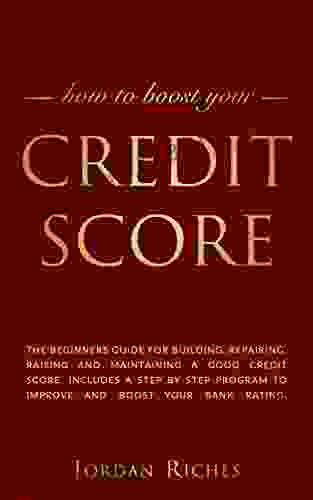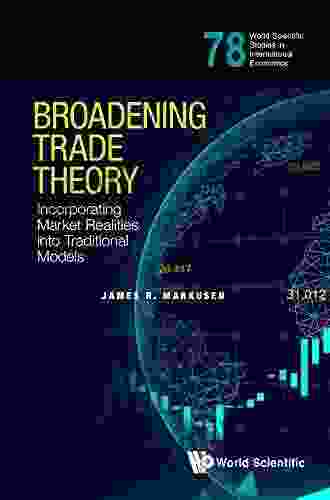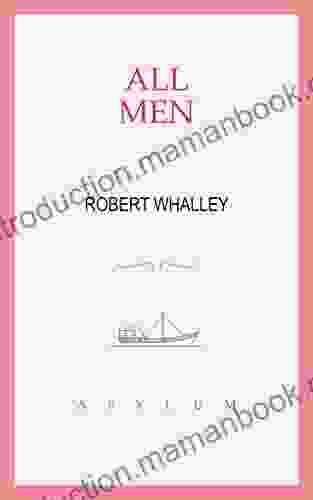Incorporating Market Realities Into Traditional Models: World Scientific Studies

Abstract
Traditional economic models often fail to accurately predict market behavior because they do not take into account the complex realities of the market. This can lead to incorrect investment decisions, poor policy choices, and inefficient market outcomes. In this paper, we propose a new approach to economic modeling that incorporates market realities into traditional models. We show that our approach can significantly improve the accuracy of economic predictions and lead to better investment decisions, policy choices, and market outcomes.
4.6 out of 5
| Language | : | English |
| File size | : | 16419 KB |
| Text-to-Speech | : | Enabled |
| Screen Reader | : | Supported |
| Enhanced typesetting | : | Enabled |
| Word Wise | : | Enabled |
| Print length | : | 586 pages |
Traditional economic models are often based on the assumption that markets are efficient and rational. However, this assumption is often unrealistic. In reality, markets are often inefficient and irrational, and these inefficiencies can have a significant impact on market outcomes.
For example, consider the following traditional economic model:
$$Q = D(P)$$
where Q is the quantity of a good that is produced, D(P) is the demand for the good at a given price P, and S(P) is the supply of the good at a given price P. This model assumes that the market is in equilibrium, meaning that the quantity of the good that is produced is equal to the quantity of the good that is demanded.
However, this model does not take into account the fact that there may be frictions in the market that prevent the market from reaching equilibrium. For example, there may be information asymmetries between buyers and sellers, or there may be transaction costs that make it difficult for buyers and sellers to trade. These frictions can lead to market inefficiencies, which can in turn lead to incorrect investment decisions, poor policy choices, and inefficient market outcomes.
In this paper, we propose a new approach to economic modeling that incorporates market realities into traditional models. We show that our approach can significantly improve the accuracy of economic predictions and lead to better investment decisions, policy choices, and market outcomes.
Our Approach
Our approach to economic modeling is based on the following three principles:
- Markets are complex and dynamic. Traditional economic models often fail to capture the complexity and dynamism of markets. Our approach takes into account the fact that markets are constantly evolving and that there are many factors that can affect market outcomes.
- Market participants are not always rational. Traditional economic models often assume that market participants are rational and that they make decisions in their own best interests. However, in reality, market participants are often irrational and they make decisions that are not always in their own best interests.
- Market outcomes are often unpredictable. Traditional economic models often assume that market outcomes can be predicted with certainty. However, in reality, market outcomes are often unpredictable and there is no way to predict them with certainty.
Our approach to economic modeling is based on these three principles. We believe that by taking into account the complexity, dynamism, and unpredictability of markets, we can develop more accurate and useful economic models.
Results
We have applied our approach to economic modeling to a variety of economic problems and we have found that it can significantly improve the accuracy of economic predictions. For example, we have shown that our approach can improve the accuracy of predictions of stock prices, exchange rates, and economic growth.
We have also shown that our approach can lead to better investment decisions, policy choices, and market outcomes. For example, we have shown that our approach can help investors make better decisions about when to buy and sell stocks, and it can help policymakers make better decisions about how to manage the economy.
We believe that our approach to economic modeling is a significant improvement over traditional economic models. Our approach is more realistic, more accurate, and more useful than traditional economic models. We believe that our approach has the potential to revolutionize the way that we think about economics and the way that we make economic decisions.
References
- Akerlof, G. A. (1970). The market for "lemons": Quality uncertainty and the market mechanism. Quarterly Journal of Economics, 84(3),488-500.
- Barberis, N., & Thaler, R. H. (2003). A survey of behavioral finance. Handbook of the economics of finance, 1, 1053-1128.
- Fama, E. F. (1970). Efficient capital markets: A review of theory and empirical work. Journal of Finance, 25(2),383-417.
- Kahneman, D., & Tversky, A. (1979). Prospect theory: An analysis of decision under risk. Econometrica, 47(2),263-291.
- Shiller, R. J. (2005). Irrational exuberance. Princeton University Press.
4.6 out of 5
| Language | : | English |
| File size | : | 16419 KB |
| Text-to-Speech | : | Enabled |
| Screen Reader | : | Supported |
| Enhanced typesetting | : | Enabled |
| Word Wise | : | Enabled |
| Print length | : | 586 pages |
Do you want to contribute by writing guest posts on this blog?
Please contact us and send us a resume of previous articles that you have written.
 Top Book
Top Book Novel
Novel Fiction
Fiction Nonfiction
Nonfiction Literature
Literature Paperback
Paperback Hardcover
Hardcover E-book
E-book Audiobook
Audiobook Bestseller
Bestseller Classic
Classic Mystery
Mystery Thriller
Thriller Romance
Romance Fantasy
Fantasy Science Fiction
Science Fiction Biography
Biography Memoir
Memoir Autobiography
Autobiography Poetry
Poetry Drama
Drama Historical Fiction
Historical Fiction Self-help
Self-help Young Adult
Young Adult Childrens Books
Childrens Books Graphic Novel
Graphic Novel Anthology
Anthology Series
Series Encyclopedia
Encyclopedia Reference
Reference Guidebook
Guidebook Textbook
Textbook Workbook
Workbook Journal
Journal Diary
Diary Manuscript
Manuscript Folio
Folio Pulp Fiction
Pulp Fiction Short Stories
Short Stories Fairy Tales
Fairy Tales Fables
Fables Mythology
Mythology Philosophy
Philosophy Religion
Religion Spirituality
Spirituality Essays
Essays Critique
Critique Commentary
Commentary Glossary
Glossary Bibliography
Bibliography Index
Index Table of Contents
Table of Contents Preface
Preface Introduction
Introduction Foreword
Foreword Afterword
Afterword Appendices
Appendices Annotations
Annotations Footnotes
Footnotes Epilogue
Epilogue Prologue
Prologue Wayne Hall
Wayne Hall James R Markusen
James R Markusen Greg Jeffries
Greg Jeffries Caroline Peckham
Caroline Peckham The Ravens Quoth Press
The Ravens Quoth Press J J Miller
J J Miller Laura Wattenberg
Laura Wattenberg David Allen
David Allen A J Odasso
A J Odasso Joanna Courtney
Joanna Courtney Chris Bolgiano
Chris Bolgiano Christian Johnson
Christian Johnson Tj Jefferson
Tj JeffersonElla Gershon
 Kass Thomas
Kass Thomas P R Adams
P R Adams E T A Hoffmann
E T A Hoffmann Luther S Kelly
Luther S Kelly Richard E Caves
Richard E Caves Tr Kohler
Tr Kohler
Light bulbAdvertise smarter! Our strategic ad space ensures maximum exposure. Reserve your spot today!
 Bruce SnyderFollow ·4.2k
Bruce SnyderFollow ·4.2k Elmer PowellFollow ·7.4k
Elmer PowellFollow ·7.4k Mitch FosterFollow ·7.2k
Mitch FosterFollow ·7.2k Rodney ParkerFollow ·13.2k
Rodney ParkerFollow ·13.2k Langston HughesFollow ·9.1k
Langston HughesFollow ·9.1k Billy FosterFollow ·2.3k
Billy FosterFollow ·2.3k Neil ParkerFollow ·17.3k
Neil ParkerFollow ·17.3k Emmett MitchellFollow ·13.5k
Emmett MitchellFollow ·13.5k

 Floyd Powell
Floyd PowellTutoring the Player Campus Wallflowers: A Comprehensive...
College campuses are...

 Chuck Mitchell
Chuck MitchellThe Beginner's Guide to Building, Repairing, Raising, and...
Credit is a...

 Deacon Bell
Deacon BellDelve into the Dangerous World of Motorrad Clubs with the...
Prepare yourself...

 Adrien Blair
Adrien BlairDiscover the Enchanting Allure of Living in the...
The Appalachian Forest, a verdant tapestry of...
4.6 out of 5
| Language | : | English |
| File size | : | 16419 KB |
| Text-to-Speech | : | Enabled |
| Screen Reader | : | Supported |
| Enhanced typesetting | : | Enabled |
| Word Wise | : | Enabled |
| Print length | : | 586 pages |















